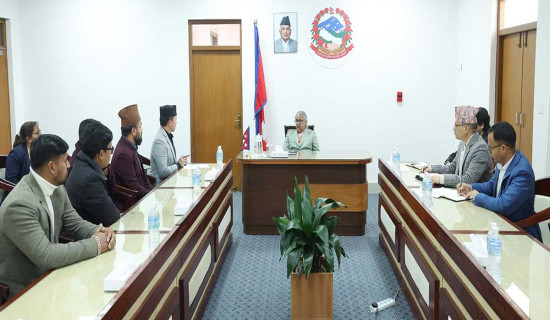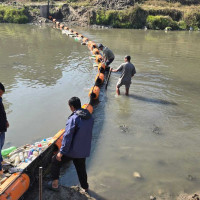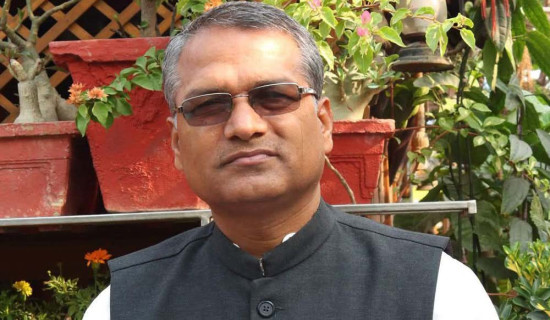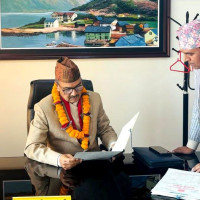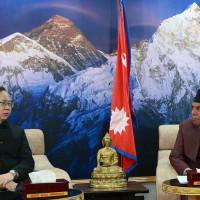- Sunday, 21 December 2025
Dengue season nearing, govt suggests preventive steps
Kathmandu, July 5: The month of August is the peak season for dengue in Nepal. As the month is approaching, cases of dengue have also been rising at an alarming rate, data show.
According to the Epidemiology and Disease Control Division (EDCD), 1,024 cases of dengue have been reported across the country until the month of June since January 2023. The cases have been reported from 66 districts.
On a monthly basis, 130 cases of dengue were reported in January, 128 in February, 203 in March, 153 in April, 150 in May and 260 in June.
The data also show that 62 per cent of the reported cases of dengue were from 10 districts – Darchula (187 cases), Dhading (131), Sunsari (75), Kaski (66), Kathmandu (46), Bhaktapur (35), Kanchanpur (32), Sankhuwasabha (30), Myagdi (29) and Lamjung (25).
Dengue is caused by a virus of the Flaviviridae family. The EDCD states that there are four distinct but closely related, serotypes of the virus that cause dengue (DENV-1, DENV-2, DENV-3 and DENV-4).
Health authorities argue that dengue has become an issue of great concern in Nepal over the years. It is the result of an unprecedented rise in the number of dengue cases. With only one case of dengue reported in 2004, the number rose to 17,992 in 2019. While the number of dengue cases was 530 and 540 in 2020 and 2021 respectively, it rocketed to 54,784 cases in 2022.
In that same year, Nepal reported 88 deaths due to dengue, making it the highest number of dengue deaths ever recorded in the country.
Moreover, the weekly bulletin of the EDCD also shows that the cases of dengue are on the rise compared to the trend of the previous year, which marked the all-time highest.
In its weekly bulletin for the 23rd epidemiological week published on June 18, 2023, 36 cases of dengue were reported in the week. Only seven cases were reported in the same week in 2022.
Similarly, 61 cases were reported in the 24th week compared to 24 cases in the same week in 2022.
In the weekly bulletin of the 25th week, which is the latest one published on July 2, 125 cases of dengue were reported. There were only 41 cases reported in the corresponding week last year.
If the trend is to continue, experts argued that the number of dengue cases in 2023 could be more than that reported in 2022.
Meanwhile, officials informed that they were taking necessary steps to reduce the burden of dengue.
According to the EDCD, an action plan for dengue prevention and control has been implemented by the respective provinces, district administrations and local levels. The World Health Organisation (WHO) states that dengue mosquitoes lay their eggs in water-filled containers inside the house and surrounding areas of dwellings (this includes non-used bottles, containers, discarded waste, tyres which hold water).
The WHO also states that many DENV infections produce only mild illness, over 80 per cent of cases are asymptomatic, and DENV can also cause an acute flu-like illness.
“Sensitisation meetings have been conducted with the Auto-mechanic Proprietors’ Association and Nepal Recollection and Recyclers’ Association to keep surroundings clean. The MoHP has initiated a campaign encouraging public offices to clean their premises for at least 10 minutes every Friday,” the EDCD informed.
Likewise, awareness campaigns are also being organised at the ground level to make people aware of the importance of cleanliness. The EDCD had also recently conducted a seminar on clinical case management on dengue where over 110 doctors and nurses had participated.
While the public has been requested to keep their surroundings clean and to use mosquito nets while sleeping, the EDCD informed that they were identifying the issues and challenges to make prevention and control of dengue more effective.



